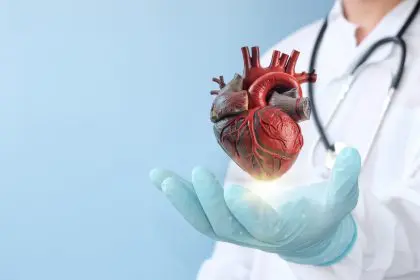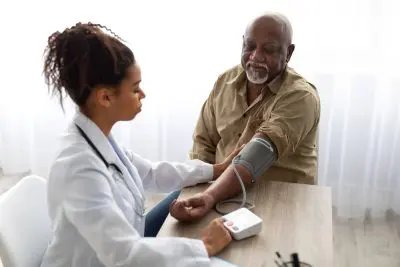Chest pain represents one of the most alarming symptoms a person can experience. The immediate fear—”Am I having a heart attack?”—creates tremendous anxiety, and rightfully so. Heart attacks claim hundreds of thousands of lives annually, with many deaths occurring because people waited too long to seek help.
The challenge lies in distinguishing potentially life-threatening cardiac events from the many other conditions that cause chest discomfort. With over a dozen different organs and structures in the chest capable of generating pain, determining the true cause requires careful assessment of specific symptom characteristics.
This distinction matters tremendously. Delaying treatment for a genuine heart attack can lead to permanent heart damage or death, while unnecessarily rushing to the emergency room for non-cardiac chest pain creates needless stress and expense.
Making this distinction becomes even more challenging because heart attacks don’t always present with dramatic, crushing chest pain like in movies. For many people—particularly women, older adults, and those with diabetes—heart attack symptoms may be subtle or atypical, creating dangerous delays in seeking treatment.
Understanding the key differences between cardiac and non-cardiac chest pain allows you to make better decisions during those critical first minutes when chest discomfort strikes. While this knowledge never replaces professional medical evaluation, it provides valuable guidance for those crucial initial moments.
Classic heart attack symptoms: what emergency physicians look for
Heart attacks occur when blood flow to part of the heart muscle suddenly becomes blocked, typically by a blood clot forming in a coronary artery already narrowed by plaque buildup. Without oxygen-rich blood, the affected heart muscle begins to die within minutes, creating the characteristic symptoms that signal a medical emergency.
The hallmark symptom—chest discomfort—typically feels heavy, tight, squeezing, or crushing rather than sharp and stabbing. Many patients describe it as a pressure or fullness sensation, often comparing it to “an elephant sitting on my chest” or “a tight band around my chest.”
This discomfort classically occurs in the center or left side of the chest and typically lasts more than a few minutes, though it may come and go in waves. Unlike many non-cardiac pains, heart attack discomfort rarely localizes to one specific point that can be pinpointed with a finger.
Pain radiation provides another important clue, as cardiac chest pain frequently spreads to other areas—particularly the left arm, but also the right arm, neck, jaw, shoulders, or upper back. This radiation pattern follows nerve pathways connected to the heart, creating referred pain in these regions.
Accompanying symptoms often provide crucial diagnostic information. Shortness of breath, cold sweats, unusual fatigue, lightheadedness, and nausea commonly occur alongside cardiac chest discomfort. When multiple symptoms appear together, cardiac causes become more likely.
Symptom timing in relation to activity offers another important clue. Cardiac pain typically worsens with physical exertion and improves with rest, reflecting the increased oxygen demand during activity. Pain that follows this pattern warrants particular concern, especially in those with cardiac risk factors.
Speaking of risk factors, the likelihood of chest pain representing a heart attack increases substantially in those with existing coronary artery disease, diabetes, high blood pressure, high cholesterol, smoking history, obesity, or family history of early heart disease. These factors significantly influence how urgently chest pain should be evaluated.
Women and heart attacks: different symptoms, different risks
Women experience heart attacks differently than men, a fact that has contributed to dangerous delays in diagnosis and treatment. Understanding these gender differences can save lives, particularly for women who might not recognize their symptoms as cardiac in nature.
While chest discomfort remains the most common heart attack symptom in women, they more frequently experience subtler, less dramatic pain described as pressure, tightness, or aching rather than the crushing pain classically associated with heart attacks in men.
Women also more commonly develop symptoms that might seem unrelated to the heart. Unusual fatigue, sleep disturbances, shortness of breath, indigestion, and anxiety may appear days or weeks before a heart attack, often attributed to stress, aging, or influenza rather than cardiac issues.
The location of discomfort frequently differs as well. Women more often experience pain in their upper back, shoulders, neck, or jaw without the classic chest discomfort, leading both patients and healthcare providers to consider non-cardiac causes.
Nausea, vomiting, and indigestion occur more frequently during female heart attacks, often creating confusion with gastrointestinal conditions. When these digestive symptoms appear alongside breathlessness, fatigue, or dizziness—particularly in women with cardiovascular risk factors—cardiac causes should be considered.
Hormonal differences partially explain these gender variations in heart attack presentation. Estrogen provides some cardiac protection before menopause, changing how coronary artery disease develops and how symptoms manifest. This protection diminishes after menopause, when women’s heart attack risk rises dramatically.
Women also tend to develop different patterns of coronary artery disease than men. While men more typically develop blockages in major coronary arteries, women more frequently experience microvascular disease affecting smaller blood vessels. This difference influences both symptoms and detection methods.
Non-cardiac chest pain: common culprits
Multiple non-cardiac conditions cause chest pain that can mimic heart attacks, creating diagnostic challenges for both patients and medical professionals. Understanding these alternatives helps contextualize chest discomfort when it occurs.
Gastroesophageal reflux disease (GERD) ranks among the most common heart attack mimickers. When stomach acid backs up into the esophagus, it creates a burning sensation in the chest—heartburn—that many mistake for cardiac pain. Clues suggesting GERD include burning pain that worsens after meals, when lying down, or bending over, and relief with antacids.
Musculoskeletal pain from chest wall structures affects up to 50% of patients seeking emergency care for chest pain. Costochondritis—inflammation where ribs connect to the sternum—creates sharp pain that intensifies with movement, deep breathing, or pressing on the affected area. Unlike heart attacks, this pain typically changes with position and localizes to a specific point.
Anxiety and panic attacks frequently manifest with chest tightness, palpitations, shortness of breath, and tingling sensations that convincingly mimic heart attacks. The presence of situational triggers, hyperventilation, fear of dying, and previous similar episodes suggests panic rather than cardiac causes, though careful evaluation remains essential since anxiety can coexist with heart problems.
Lung conditions including pneumonia, pleurisy, pulmonary embolism, and pneumothorax (collapsed lung) often cause chest pain that worsens with breathing. Sharp pain with each breath, especially accompanied by fever, cough, or recent immobility, suggests these respiratory causes rather than cardiac issues.
Gallbladder disease typically causes right-sided or upper abdominal pain that may radiate to the chest and shoulder. This pain often follows fatty meals and lasts several hours, distinguishing it from the more central discomfort of heart attacks.
Shingles (herpes zoster) can cause intense, band-like pain wrapping around one side of the chest wall before the characteristic rash appears. This neurological pain follows a specific nerve pathway and typically affects just one side, unlike the more central distribution of cardiac pain.
While these alternative explanations exist, it’s important to remember that heart attacks remain the most immediately dangerous cause of chest pain. When uncertainty exists, emergency evaluation provides the safest approach.
When to call 911 immediately
Certain chest pain scenarios warrant immediate emergency response without delay for home remedies or monitoring. Understanding these situations helps prevent dangerous treatment delays when minutes matter most.
New or unexpected chest discomfort lasting more than a few minutes, especially when it feels like pressure, squeezing, fullness, or pain in the center or left side of the chest, requires immediate medical attention. This classic presentation signals possible heart attack until proven otherwise.
Chest pain accompanied by shortness of breath, sweating, nausea, vomiting, dizziness, or lightheadedness creates a particularly concerning combination suggesting cardiac origin. These additional symptoms reflect the body’s stress response to compromised heart function.
Pain radiating to the jaw, neck, shoulders, back, or either arm—especially the left—represents another red flag suggesting cardiac origin. This referred pain pattern follows nerve pathways connected to the heart and strongly suggests myocardial ischemia (inadequate blood flow to heart muscle).
Chest discomfort accompanied by a sense of impending doom or anxiety unrelated to the pain itself often indicates a cardiac event. This sense of dread represents the body’s recognition of a life-threatening situation and should never be ignored.
Symptoms occurring in those with known coronary artery disease or multiple cardiovascular risk factors demand particular attention. Previous heart attacks, stent placements, bypass surgery, or diagnoses of coronary artery disease substantially increase the likelihood that new chest symptoms represent a cardiac emergency.
Chest pain that mimics previous heart attack symptoms in those with cardiac history always warrants immediate evaluation. If it felt like a heart attack before and was confirmed as such, similar symptoms likely indicate a recurrent cardiac event.
Symptoms unresponsive to appropriate non-cardiac treatments also raise concern. If chest pain initially thought to be acid reflux doesn’t improve with antacids, or presumed muscle pain doesn’t respond to position changes or over-the-counter pain relievers, reconsideration of cardiac causes becomes essential.
What to expect in the emergency department
Understanding what happens during emergency evaluation for chest pain helps reduce anxiety and prepare patients for this potentially life-saving assessment process.
The triage assessment begins immediately upon arrival, with medical staff quickly checking vital signs, oxygen levels, and asking targeted questions about symptom characteristics. This rapid evaluation helps determine how quickly full assessment must proceed.
An electrocardiogram (ECG or EKG) typically occurs within minutes of arrival, providing crucial information about heart rhythm and potential ongoing heart damage. This painless test uses electrodes placed on the chest to detect electrical activity in the heart, often revealing telltale signs of heart attack.
Blood tests for cardiac biomarkers, particularly troponin levels, help confirm or rule out heart muscle damage. These proteins leak from damaged heart cells into the bloodstream during heart attacks, providing biochemical evidence of cardiac injury. Initial tests may be negative, requiring repeated measurements hours later to detect rising levels.
Continuous cardiac monitoring through electrodes connected to screens allows medical teams to watch for dangerous rhythm disturbances that might accompany heart attacks. This ongoing surveillance helps detect complications requiring immediate intervention.
Additional testing may include chest X-rays to evaluate the heart’s size and shape while checking for lung conditions that might cause chest pain. Echocardiograms (ultrasound examinations of the heart) may assess heart function and wall motion abnormalities suggesting damaged areas.
For patients with inconclusive initial testing but concerning symptoms, further evaluation may include stress tests, CT coronary angiography, or cardiac catheterization to directly visualize coronary arteries. These more advanced assessments help identify blockages that might have caused symptoms without creating detectable damage.
Throughout this evaluation process, medical teams often provide treatments presumptively, including aspirin, nitroglycerin, pain medication, and sometimes blood thinners or clot-dissolving medications if a heart attack appears likely. These interventions can limit damage while diagnostic clarification continues.
The other chest pain emergency: aortic dissection
While heart attacks represent the most common life-threatening cause of chest pain, another condition—aortic dissection—creates an even more immediately dangerous situation requiring rapid recognition and specialized treatment.
Aortic dissection occurs when the inner layer of the aorta (the main artery carrying blood from the heart) tears, allowing blood to flow between the inner and outer walls of this critical blood vessel. This separation weakens the aortic wall, creating risk for rupture and catastrophic bleeding.
The hallmark symptom—sudden, severe, tearing or ripping chest or back pain—often reaches maximum intensity immediately, unlike the more gradually developing pain of many heart attacks. Patients frequently describe this as the worst pain they’ve ever experienced.
Risk factors differ somewhat from typical heart attack risk, with hypertension, connective tissue disorders like Marfan syndrome, previous heart surgery, and family history of aortic disease creating particular vulnerability. Cocaine use also significantly increases risk.
Diagnosis requires specialized imaging, typically CT angiography, to visualize the aorta and detect the characteristic separation of its layers. Standard heart attack tests like ECGs and troponin measurements generally appear normal unless the dissection has affected blood flow to the heart itself.
Treatment typically requires emergency surgery rather than the catheterization procedures used for most heart attacks. This fundamental difference in management approach makes accurate and rapid diagnosis particularly critical.
The mortality rate for untreated aortic dissection approaches 25% within the first 24 hours and 50% within the first week, underscoring the urgency of proper diagnosis and treatment. Any patient with sudden, severe, tearing chest or back pain requires immediate emergency evaluation.
After the emergency: follow-up care and prevention
For patients whose chest pain proves cardiac in origin, comprehensive follow-up care helps prevent future episodes and complications. This care extends far beyond the emergency department or hospital stay.
Cardiac rehabilitation programs provide supervised exercise, education, and support for those recovering from heart attacks, helping restore physical function while reducing future cardiac risks. These structured programs typically last several months and significantly improve long-term outcomes.
Medication regimens following cardiac events typically include multiple prescriptions targeting different aspects of heart health. These may include antiplatelet drugs to prevent clotting, beta-blockers to reduce heart workload, ACE inhibitors to protect heart function, and statins to manage cholesterol levels.
Lifestyle modifications take on critical importance after cardiac events. Smoking cessation, dietary improvements, stress management, weight optimization, and regular physical activity (as medically approved) collectively create substantial protection against recurrent problems.
Regular follow-up with cardiologists allows for medication adjustments, symptom monitoring, and periodic testing to assess heart function and coronary artery status. This ongoing surveillance helps detect and address problems before they create emergencies.
Cardiac device implantation sometimes becomes necessary following significant heart damage. Pacemakers regulate abnormal heart rhythms, while implantable cardioverter-defibrillators (ICDs) provide protection against sudden cardiac death in those with severely damaged heart muscle.
For patients whose chest pain stems from non-cardiac causes, appropriate treatment of the underlying condition prevents recurrent symptoms and unnecessary emergency visits. This might include acid-reducing medications for GERD, anti-inflammatory approaches for musculoskeletal pain, or anxiety management for panic-related symptoms.
What we now know about heart attack recovery
Recent research has transformed our understanding of heart attack recovery, moving beyond the once-common view that survivors should permanently limit physical activity and accept diminished capabilities.
Modern cardiac rehabilitation emphasizes progressive activity rather than restriction. Structured, medically supervised exercise programs help survivors safely rebuild fitness levels, often achieving capabilities exceeding their pre-heart attack status through properly designed training.
Psychological recovery deserves equal attention to physical healing. Depression affects up to 33% of heart attack survivors, while anxiety and post-traumatic stress disorder also occur frequently. Addressing these mental health impacts significantly improves quality of life and medical outcomes.
Sexual activity typically can resume within weeks of uncomplicated heart attacks, contrary to outdated concerns about cardiac risks. Most patients can safely return to intimacy once they can comfortably climb two flights of stairs without symptoms—a reassuring guideline that helps normalize this important aspect of life.
Return to work becomes possible for most survivors, though timing varies based on physical demands, recovery progress, and cardiac function. Many office workers return within two weeks of uncomplicated heart attacks, while those with physically demanding jobs may require job modifications or longer recovery periods.
Dietary approaches have evolved beyond the severely restricted “cardiac diets” of previous decades. Modern nutrition recommendations emphasize Mediterranean-style eating patterns rich in vegetables, fruits, whole grains, lean proteins, and healthy fats rather than focusing primarily on restriction.
Monitoring technologies increasingly allow survivors to track their recovery progress at home. Smartphone-connected devices measuring heart rate, blood pressure, physical activity, and even single-lead ECGs provide data that helps patients and physicians optimize recovery and detect potential problems early.
When chest pain remains unexplained
Despite comprehensive testing, up to 30% of patients with recurrent chest pain receive no definitive diagnosis, creating frustration and ongoing anxiety about potential serious conditions.
Coronary microvascular disease—dysfunction in the heart’s smallest blood vessels—often explains previously undiagnosed chest pain, particularly in women. These tiny vessels don’t appear on standard coronary angiograms, requiring specialized testing for proper diagnosis.
Esophageal disorders beyond typical GERD, including esophageal spasm and hypersensitivity, frequently cause chest pain that mimics cardiac symptoms. These conditions involve abnormal muscle contractions or heightened pain sensitivity in the esophagus, creating convincing cardiac-like discomfort.
Psychological factors including anxiety, depression, and somatic symptom disorders significantly influence chest pain perception and interpretation. These factors can both cause chest discomfort directly and amplify the perceived severity of pain from minor physical causes.
Comprehensive management approaches for unexplained chest pain typically combine medications targeting potential underlying mechanisms, cognitive-behavioral therapy addressing anxiety and pain perception, and graded exercise programs improving overall fitness and pain tolerance.
Second opinions from different specialists sometimes uncover previously missed diagnoses. Cardiologists, gastroenterologists, pulmonologists, rheumatologists, and pain management specialists may each contribute valuable perspectives on challenging cases.
Patient-doctor communication proves particularly important in managing unexplained chest pain. Clear discussions about diagnostic limitations, symptom management strategies, and appropriate emergency responses help patients navigate the uncertainty while maintaining both physical and psychological well-being.
The future of chest pain diagnosis
Emerging technologies and approaches promise to transform chest pain evaluation, potentially saving more lives while reducing unnecessary testing and treatment for non-cardiac conditions.
High-sensitivity troponin tests can detect much smaller amounts of this heart damage marker than previous versions, allowing for faster confirmation or exclusion of heart attacks. These advanced tests, when combined with appropriate clinical assessment, help emergency physicians make quicker, more accurate decisions about which patients require admission and which can safely return home.
Coronary CT angiography provides detailed images of heart arteries without the invasive catheterization previously required for such visualization. This technology helps identify or exclude coronary artery disease in intermediate-risk patients, reducing unnecessary invasive procedures.
Artificial intelligence applications increasingly support clinical decision-making for chest pain evaluation. Machine learning algorithms analyzing patterns across thousands of cases help identify subtle diagnostic clues that might otherwise go unnoticed, potentially improving accuracy and efficiency.
Wearable technology monitoring vital signs, heart rhythms, and other health parameters may eventually allow earlier detection of cardiac problems before they cause significant symptoms. These devices might identify concerning patterns triggering preventive interventions before full-blown heart attacks develop.
Point-of-care ultrasound performed by emergency physicians provides immediate bedside imaging that can identify various causes of chest pain, including heart, lung, and aortic abnormalities. This rapid assessment capability helps direct subsequent testing more efficiently.
Home-based cardiac monitoring technologies continue evolving, potentially allowing patients with concerning but not immediately dangerous symptoms to undergo initial evaluation at home with remote professional supervision. This approach might reduce emergency department crowding while maintaining safety.
These advances collectively promise more personalized, efficient chest pain evaluation that better distinguishes life-threatening conditions requiring immediate intervention from less serious causes that can be managed more conservatively. This evolution benefits both patients experiencing genuine cardiac emergencies and those with non-cardiac chest pain by targeting appropriate resources to each group.
















